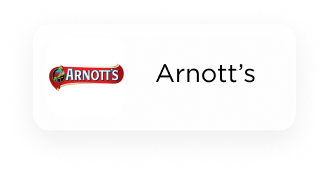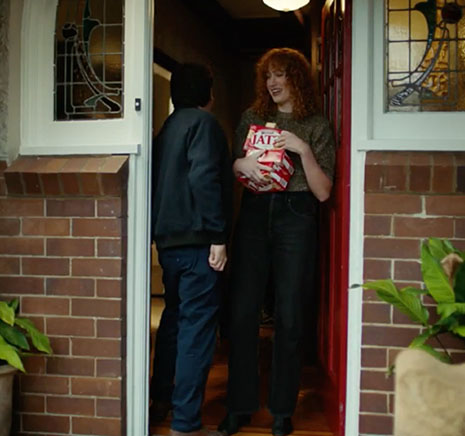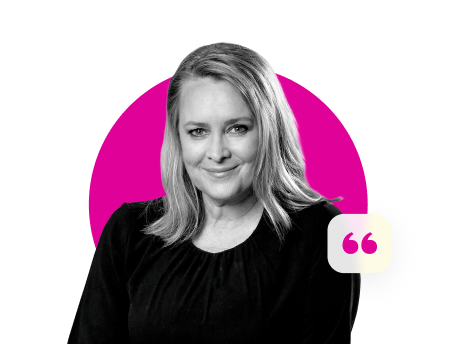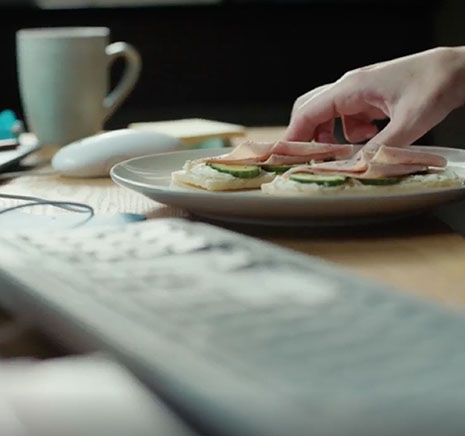


Pop in for a cuppa across homes from Bathurst to Bunbury, and you’re bound to find Arnott’s goodies in the biscuit tin. But when it came to connecting with consumers outside of Australian capital cities through media, the 157-year-old iconic brand wasn’t reaching anywhere near as many eyes or ears.
“Arnott’s hasn’t really done much at all when it comes to regional Australian audiences in our media or marketing mix. All that changed last year, though, when we made a considered effort to buy regional media,” explains Arnott’s Chief Marketing Officer, Jenni Dill.
The rationale came via marketing mix modelling and recognition Arnott’s was missing one-third of its consumers within its Metro Cap City media plan.
“I don’t know too many brands out there that can say they don’t need to reach one-third of their audiences,” says Dill. “We had a lot of analytics showing we were doing a great job with some audiences but missing all these other ones. As far as we could tell, we were still selling a lot of biscuits in country towns and regional areas around Australia. But when we started looking at where we were doing well from an Arnott’s perspective, and where we had further opportunities, we had to lean into regional.”



Realising a more proactive regional marketing strategy took 6-12 months of careful work by the Arnott’s marketing team to find the funds to buy additional reach. The FMCG literally reshaped its media approach, restructuring planning to buy regional for all campaigns across the year.
“We know additional reach is really good for helping brands grow more: More people seeing more of your products, more of the time. When you’re in an impulse category like ours, it helps sell more biccies,” Dill says. “We had to completely reshape our budget to create the space that would allow us to do that and extend all campaigns beyond what they were typically grounded on, which was five capital cities.”
Helping Arnott’s achieve this is a more continuous, always-on media plan. The FMCG also broadened overall targeting on every media buy, instead of specific targets for every brand in its portfolio.
“We went to a much less fragmented model, where we had fewer messages on for longer against a broader target audience,” Dill says. “As we did that, it fundamentally changed the cost of every impression, plus the cost of reach. That allowed us to create the room to be almost always on, more often, for more of our people and for more of the population, more of the time.”
The proactive regional approach materialised with the debut of Arnott’s national masterbrand campaign, ‘Moments’ at the beginning of 2023. The campaign, designed in partnership with Saatchi & Saatchi and MOFA, halos more of the Arnott’s portfolio consumers love, such as Shapes, Jatz, Monte Carlo and Cruskits, by highlighting the emotive and special moments when these products are consumed.
“Being able to create a brand campaign encompassing all of our brands in all of the occasions you would share those products with friends, then being able to communicate that more often to more people, was absolutely the backbone of the plan,” Dill says.

Arnott’s boasts a wealth of insight into products consumers love the most, what they love about them, as well as when they last purchased them. A gap between those measures was what the masterbrand sought to plug.
“We wanted to tap into those fond and fun memories. We also had a lot of consumer and human insights that fit into the creative,” Dill says.
TV was the starting point, both in metro and regional areas. Arnott’s has since expanded the campaign to in-store, socials and more.
“The power of broad reach TV regionally felt like the best fit with our broad portfolio of brands. But in previous roles, I’ve bought a lot of outdoor and local proximity in country towns and regional areas. They all play a really important role,” Dill says. “I also think the activation support you can get with doing regional radio is second to none because you become part of the community and fabric of life.”



More broadly, Arnott’s uses three key sources of data and insights to help make decisions on where and how to invest in regional Australia activities. First is marketing mix modelling in partnership with Analytics Partners. Dill says the team strives to push boundaries every year to create a bigger and better response from its media budget. One of the key insights there was that Arnott’s wasn’t talking sufficiently to regional audiences.
The second source of insight is store-level scan data. Having analysed stores across the country, Arnott’s has seen different patterns of consumption between city stores and regional stores. Again, this helped identify several areas where the brand could do a better job regionally.
“There were key differences between metro and regional when we unpacked where some of our brands and products were performing better. Some brands are very much anchored in city suburbs of Brisbane, Melbourne, Sydney, Adelaide or Perth. But the majority of products have much broader appeal to all ages and all walks of life,” Dill says. “What we found when we unpacked a lot of store-level scan data was we were actually selling much more than we were relative to CBD areas in regional areas.”
The third data source is regular consumer insights and tracking. This continues to illustrate the special place Arnott’s has as an Australian brand in the hearts of minds of consumers.
“It’s especially the case in regional areas where we have long been involved in industry and agriculture and in creating regional jobs,” Dill says. “We are one of Australia’s largest buyers of wheat. We’re a big part of regional Australia. When we looked at the reach numbers, then the impact we could potentially have, regional media felt like the first thing we needed on our list of 2023 priorities.”
Thanks to results achieved from investment into regional markets thus far, Arnott’s is planning to continue targeting regional audiences through its masterbrand campaign work. Plans are afoot to roll out a similar plan for the power brands Australians know and love, such as Tim Tams and Shapes.
“For the whole country, Tim Tams represent those little moments of indulgence; for less than $4 on any given day, you can get a packet anywhere in Australia and enjoy that indulgent moment,” Dill adds.


Arnott’s has seen strong growth around its masterbrand across all markers, as well as grown market share.
“The biscuit category is growing in terms of category, and we’re growing our share of it. We’re a very clear number one player in that market,” Dill says. “We know the overall campaign is resonating. But it’s also working really hard in regional areas based on our marketing mix modelling and analytics. We’re really delighted with the results.”
From an agency perspective, regional media buying now sits on the same media plan as an extra budget line and is an extra set of networks planners need to transmit to effectively. “Negotiations had to be had and spots bought. But it’s all doable,” Dill says.
The results have equally helped break down barriers internally and reinforced the importance of taking a longer regional marketing view.
“I don’t think the question of if you should be investing in regional or not is there, because the results speak for themselves. We’ve all felt the impact in terms of sales and market share growth,” Dill says.
Freeing up budget to buy regional advertising is one thing, but Dill sees several regional audience myths and beliefs marketers and agencies subscribe to holding brands back.
“Marketers tend to live in a Sydney and Melbourne bubble, particularly marketers with big media spend budgets,” Dill comments. “You have to work really hard to get out of those bubbles and make sure you really understand your consumers, as well as what’s going on in their lives. You have to understand where they live, how they live and how you, as a marketer, can reach them.
“Personally, I grew up on regional television as I grew up in a regional area. You saw everything from the local lawnmower shop selling their mowers, to something agricultural or farming products. A lot of people still think that’s the way regional media works. But it’s much more progressive and dynamic. And when you think over one-third of our population lives in regional areas, it’s definitely an opportunity area you should be thinking about.”



I don’t know too many brands out there that can say they don’t need to reach one-third of their audiences. When we started looking at where we were doing well from an Arnott’s perspective, and where we had further opportunities, we had to lean into regional.
For Dill, any brand with national scale should therefore be thinking about how they’re reaching the broadest audience possible.
“Even if you’re a state-based brand, you still have massive opportunities for broader reach to consumers in regional areas. The bang for the buck we’re getting with investment in regional Australia is certainly one we’re really happy with and that we’re going to continue with,” she says.
“I’d love to tell you not to do it, because that feels like my little secret. It helps me get the media buys I want in those markets. But it really is a key part of our marketing mix. As you’re looking to extend the reach of your brands, drive growth and deliver some results for your business, it’s definitely something you should be considering.”
And if your budget is stretched, do a test. “Lean in, pick a regional market. Make sure you’ve got some metrics so you can measure the impact of it, and make sure you’ve got a model that works that you can continue to invest in,” Dill says.






